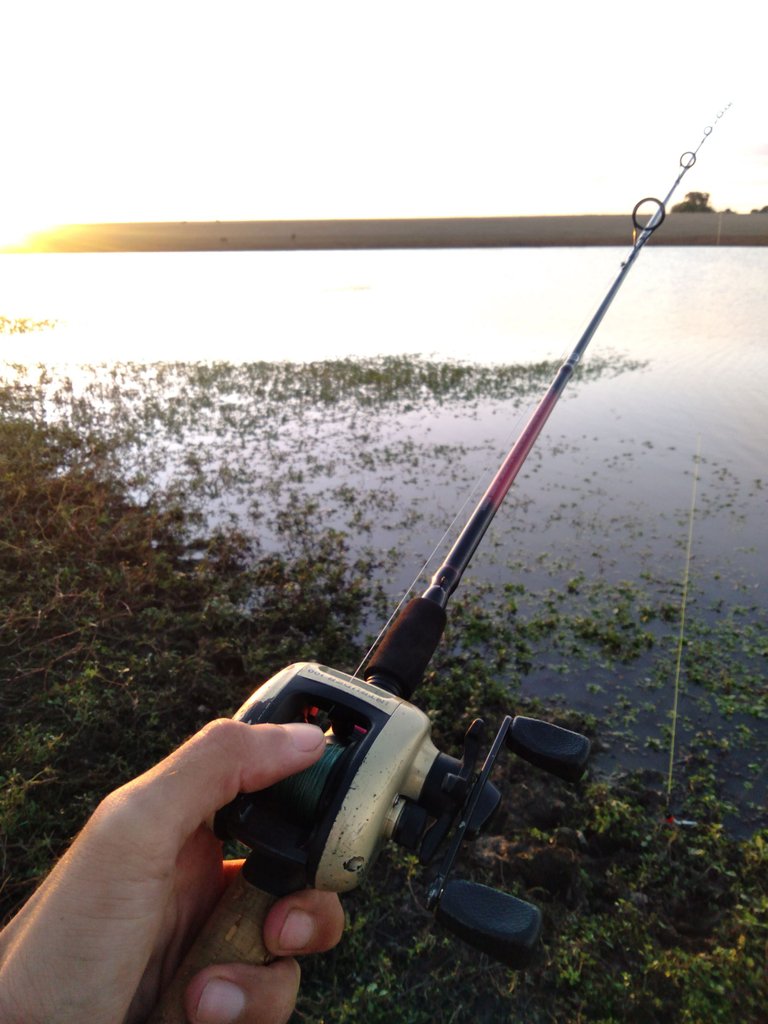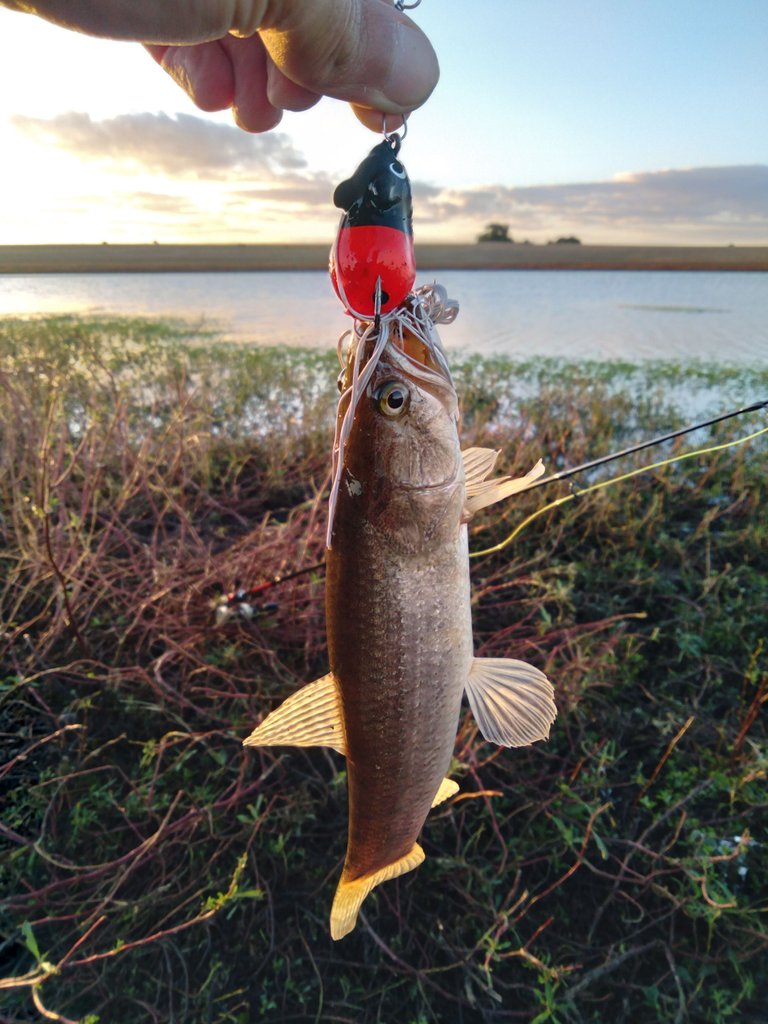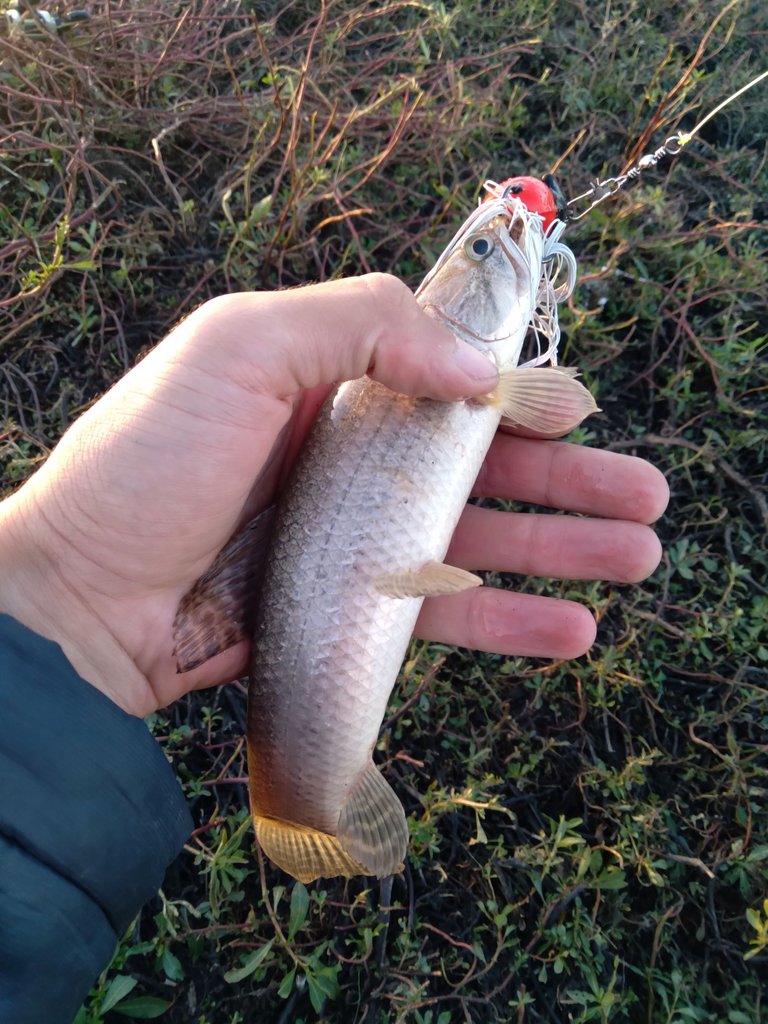Heeeyho Readers! The fishing season is almost here. Let's get ready!
In twenty-five years of fishing (s#&t time flies) I've never tried artificial lures. Back then, when I was into fishing competitions, capturing natural baits and preparing them beforehand meant winning or loosing. Truth is: our coast is not appropriate for artificial lures and capturing earthworm or carrying a piece of animal fat for freshwater fish was always cheaper.
However, weeks ago I visited a cousin's farm and decided to try out some artificial baits: two rubber frogs and a rubber mouse. Did it work?

The fishing spot is a freshwater reservoir (aka a huge farm pond), whereas the aimed species is called traíra (Hoplias Malabaricus). This type of Brazilian fish is most-known for being a ferocious attacker that lives in slow turbid lowland waters, canals, irrigation and drainage ditches, and ponds and other still waters. It's also an incredibly territorial species that won't hesitate to attack anything that bother them. I've had success capturing traíra using red meat or other small fish as bait; never tried artificial lures until now.
Gear

Fishing gear was minimal this time. It included three different artificial lures (two rubber frogs and a mouse); a 6" Shimano carbon rod paired with a rather old Marine Sports baitcaster reel; spare hooks and bobbers (not used); Swiss Army knife; pair of pliers.
For the line I used a 0.18 Maruri multi-filament line. Because the traíra have incredibly sharp teeth, I added about a meter of a simple 0.60 monofilament leader to avoid breaking the rather thin expensive multi. Rubber lures are supposed to "swim" on the surface, so I only clipped them to a snap. When it becomes too windy to cast, adding a tiny sinker helps (not the case this time).

Starting with the rubber frog: easy to cast for such a lightweight lure, even on headwinds. Both the frog and the mouse showed incredible, natural movements under water. The traíra tend to stay on shallow waters, so no need for long distance casting; although I could not reach farther than thirty to forty meters — mostly a result of my baitcaster being so old and having only two tired bearings.
It didn't take long for the first attacks. The awesome part of fishing traíra is that their attacks are brutal, though they tend to miss the bait a lot. At least I knew there was fish in there.

After a few missed attacks on the rubber frog, I decided to try out the rubber mouse. Perhaps a smaller lure would yield something. It worked. It turned out the traíra in my cousin's pond were young.

The Hoplias Malabaricus grow up to 60cm — though it's more common to find 40cm ones —, and take about two years to reach its permitted capture size. For that reason I released all the captures. These little fellas have a long way to go before we can eat them.
From what I researched, the traíra are more common in Brazil and Central America, being the Amazonian traíra the biggest species (Hoplias macrophthalmus).
Eventhough the rubber frog and mouse succeed in capturing traíra, these kind of lure is not fish specific. According to my research, they are widely used for bass fishing and other freshwater species all around the world.
To conclude, I must say that I was impressed with the result. I might start collecting different artificial lures to try out this summer. Let's see how it goes.
Do you prefer natural or artificial lures? Let me known in the comments.
Peace.
Did you know that I have a book out? Check this!
Access Link: https://www.amazon.com/dp/6500272773?
If you enjoyed this post consider leaving your upvote for a hot coffee.
Find me on Twitter: https://twitter.com/mrprofessor_
~Love ya all,

Disclaimer: The author of this post is a convict broke backpacker, who has travelled more than 10.000 km hitchhiking and more than 5.000 km cycling. Following him may cause severe problems of wanderlust and inquietud. You've been warned.


The rewards earned on this comment will go directly to the people( @mrprofessor ) sharing the post on Twitter as long as they are registered with @poshtoken. Sign up at https://hiveposh.com.
Why is it fishing session? is it because the weather?
You mean season? For this kind of fish it's mostly the weather, yes. For some reason this species is kinda slow during the winter, when the waters are cold. For sea fishing the season is the whole year.